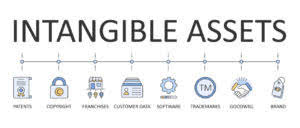
Monitoring these metrics and generating reports with a tool like Invoicera is important. You can make good decisions to optimize your accounts payable process and improve efficiency by getting real-time insights. Today, the advent of ERP financial systems and integrated accounts payable systems offers clear benefits to your business.
Hence, there is no need for you to manually enter or upload all your invoices. Besides this, your purchase and payment process would also get automated. Furthermore, based on Walmart’s payment schedule, its suppliers can determine the credibility of the company.
Loading Data
On the other hand, accounts payable can include operating, financial, and other short-term liabilities of a business. Thus, accounts payable includes a comprehensive set of short-term debts of a company. Such transactions will also be recorded under the current liabilities and AP account section. If your financial liabilities seem overwhelming, consider seeking Debt management consultancy services.
- Accounts payable are obligations that must be paid off within a given period to avoid default.
- Maintaining strong vendor relationships and understanding what matters to your vendors is crucial to maintaining a healthy supply chain and growing your business.
- It appears as a current liability on a company’s balance sheet and indicates the amounts that a company owes to vendors for products or services it has received but not yet paid for.
- For example, you might pay for personal expenses on credit because you need the cash in your account for something else.
- Of course, the company can look for an alternate supplier, but that takes up valuable administrative workload.
- This is because it ensures that your accounts payable contributes positively towards your business’s cash flows.
Using the company’s cash the right way means extended payment terms, increased warranty periods, or even special holds on inventory. Today’s business climate begs people to do more with less, and every industry accounts payable management is under pressure. Companies cannot afford to miss opportunities to free up working capital. You may seek alternative debt restructuring advice from liquidation specialists. You need to develop a strategy that gives greater availability to the cash trapped on your balance sheet.
What Is Included in Accounts Payable?
Companies seeking trade credit must demonstrate that they meet certain criteria with respect to their creditworthiness and financial condition. Outsourcing also entails risks related to complying with data protection regulation and safeguarding sensitive financial information. Hence, it requires due diligence to ensure that the service provider can meet strict security requirements. Vendors often prioritize their most reliable customers in times of product shortage or when offering new services or products. This prioritization can directly impact the efficiency and quality of your business, providing a competitive advantage in your respective industry. However, similar to automation, these software solutions require significant investment and proper training.
It’s better to take a more strategic approach to managing working capital. This not only aids in strategic decision-making but also improves budgeting and cash flow management. Businesses can negotiate better terms with suppliers, taking advantage of early payment discounts or avoiding late payment penalties.
Repeat the Process
A fifth way to manage AP for better RCM is to collaborate with your RCM team, such as the billing staff, the coding staff, the collection staff, or the revenue analysts. Collaborating with your RCM team can help you align your AP processes with your RCM processes, such as the charge capture, the claim submission, the payment posting, or the denial management. Accounts payable automation can reduce and streamline these manual processes. This can speed up bill processing, reduce errors and fraud, and even lower costs. There are many ways to set up and manage your accounts payable process. This article will cover how to manage both domestic and international payments.

Precise, timely records maintain legal compliance and vastly improve internal decision-making. It is worthwhile to delve into both aspects to understand the value of accurate record keeping better. Consequently, Accounts Payable plays a critical role in managing short-term finance for the company. It affects various aspects of financial statements, including total liabilities, owner’s equity, cash flow, and net income. Being mindful of this impact can provide a more thorough understanding of a company’s financial health.
When managed appropriately financing purchases can contribute to effective working capital management. Purchasing inventory, raw materials, and other goods on trade credit allows a company to defer its cash outlays, while accessing resources immediately. Strong negotiation power means your business has the potential to discuss payment terms that may be more favorable.

Technology tools can provide businesses with real-time insights into their accounts payable processes, enabling them to make informed decisions based on accurate and up-to-date information. Whether it’s tracking payment trends, monitoring outstanding invoices, or analyzing cash flow patterns, technology can provide the necessary data to drive business decisions. This level of visibility and transparency allows businesses to identify areas for improvement, optimize payment schedules, and make informed financial decisions. AP automation offers enhanced reporting, providing insights into payment statuses, outstanding balances, early-payment discounts, and vendor performance in real time. Detailed reports empower finance teams for data-driven decisions, cash flow optimization, improved supplier terms, and enhanced operational efficiency.
Trade payables constitute the money a company owes its vendors for inventory-related goods, such as business supplies or materials that are part of the inventory. Accounts payable include all of the company’s short-term obligations. For example, imagine a business gets a $500 invoice for office supplies. When the AP department receives the invoice, it records a $500 credit in accounts payable and a $500 debit to office supply expense. The $500 debit to office supply expense flows through to the income statement at this point, so the company has recorded the purchase transaction even though cash has not been paid out.
